本期为大家推荐的内容为论文《Assessing carbon reduction benefits of teleworking: A case study of Beijing》(远程办公的碳减排效益评估——以北京为例),发表在 Science of The Total Environment 期刊,欢迎大家学习与交流。
远程办公可以有效减少与物理通勤相关的能源消耗和碳排放。关于评估远程办公碳减排效益的既有研究通常依据假设或定性方法,忽略了不同行业实施远程办公的不同潜力。本研究提出了一种定量方法来评估不同行业远程办公的碳减排效益,并以北京为例展开实证研究。首先评估了不同行业的远程办公渗透率;然后,通过大规模出行调查数据,依据减少的通勤距离来评估远程办公的碳减排效益;最后,将研究样本扩展到全北京市域范围,并通过蒙特卡洛模拟评估了碳减排效益的不确定性。结果表明:(1)远程办公年平均可减少碳排放132万吨(95%CI:70–205),占北京市道路运输总碳排放量的7.05%(95%CI:3.74%–10.95%);(2)信息传输、软件和信息技术服务业,和科学研究和技术服务业具有较高的减碳潜力。此外,反弹效应略微削弱了远程办公的碳减排效益,有必要加以考虑并通过相关政策进行缓解。该方法也适用于世界其他地区,可以为远程办公减少城市碳排放的巨大潜力提供支持性证据,为决策者提供重要参考,有助于未来混合工作的模式发展和实现全球碳中和目标。
题目:Assessing carbon reduction benefits of teleworking: A case study of Beijing
(远程办公的碳减排效益评估——以北京为例)
作者:Wenzhu Li, Ningrui Liu and Ying Long*
发表刊物:
Science of The Total Environment
DOI:
https://doi.org/10.1016/j.scitotenv.2023.164262
URL:
https://www.sciencedirect.com/science/article/pii/S0048969723028838
Teleworking can efficiently decrease the energy consumption and carbon emissions related to physical commuting. Previous studies on assessing the carbon reduction benefits of teleworking were customarily performed according to hypotheses or qualitative methods, and disregarded different potentials of different industries for teleworking implementation. In this study, a quantitative approach was proposed to assess the carbon reduction benefits of teleworking in different industries, which was illustrated via the case study of Beijing, China. The teleworking penetrations of different industries were first estimated. Then, the carbon reduction of teleworking was assessed through the decreased commuting distance using the large-scale travel survey data. Finally, the study samples were extended to a citywide scale and the uncertainty of carbon reduction benefits was evaluated with Monte Carlo simulation. The results showed that (1) teleworking can lead to an average of 1.32 (95 % confidence interval (CI): 0.70–2.05) million tons of carbon reduction, accounting for 7.05 % (95 % CI: 3.74 %–10.95 %) of the total carbon emissions by road transport in Beijing; and (2) information and communication, and professional, scientific and technical service industries had higher carbon reduction potential. Additionally, the rebound effect slightly weakened the carbon reduction benefit of teleworking, which was necessary to be considered and mitigated through relevant policies. The proposed method can be also applied to other regions worldwide, helping to exploit future work patterns and realize global carbon neutrality targets.
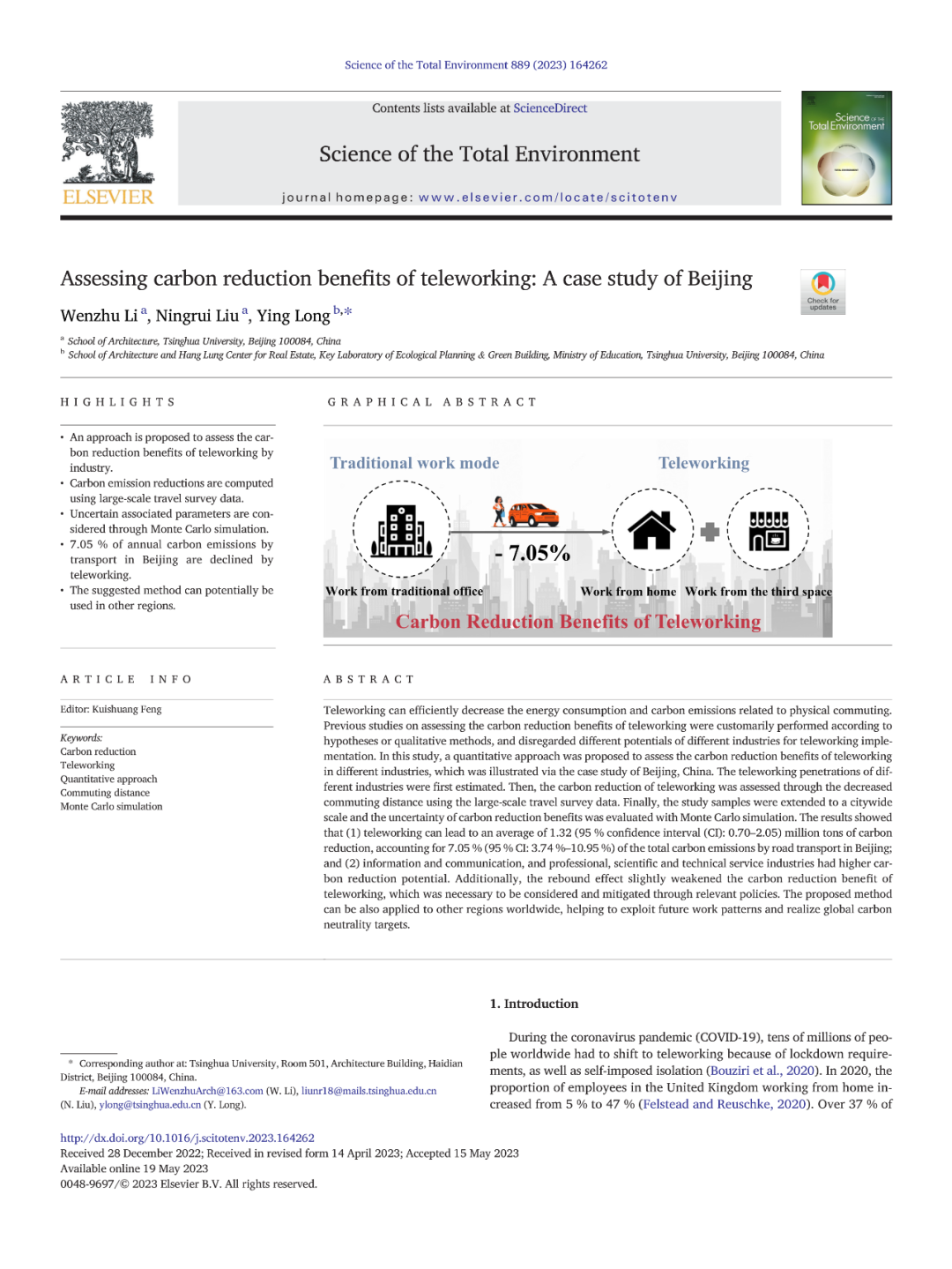
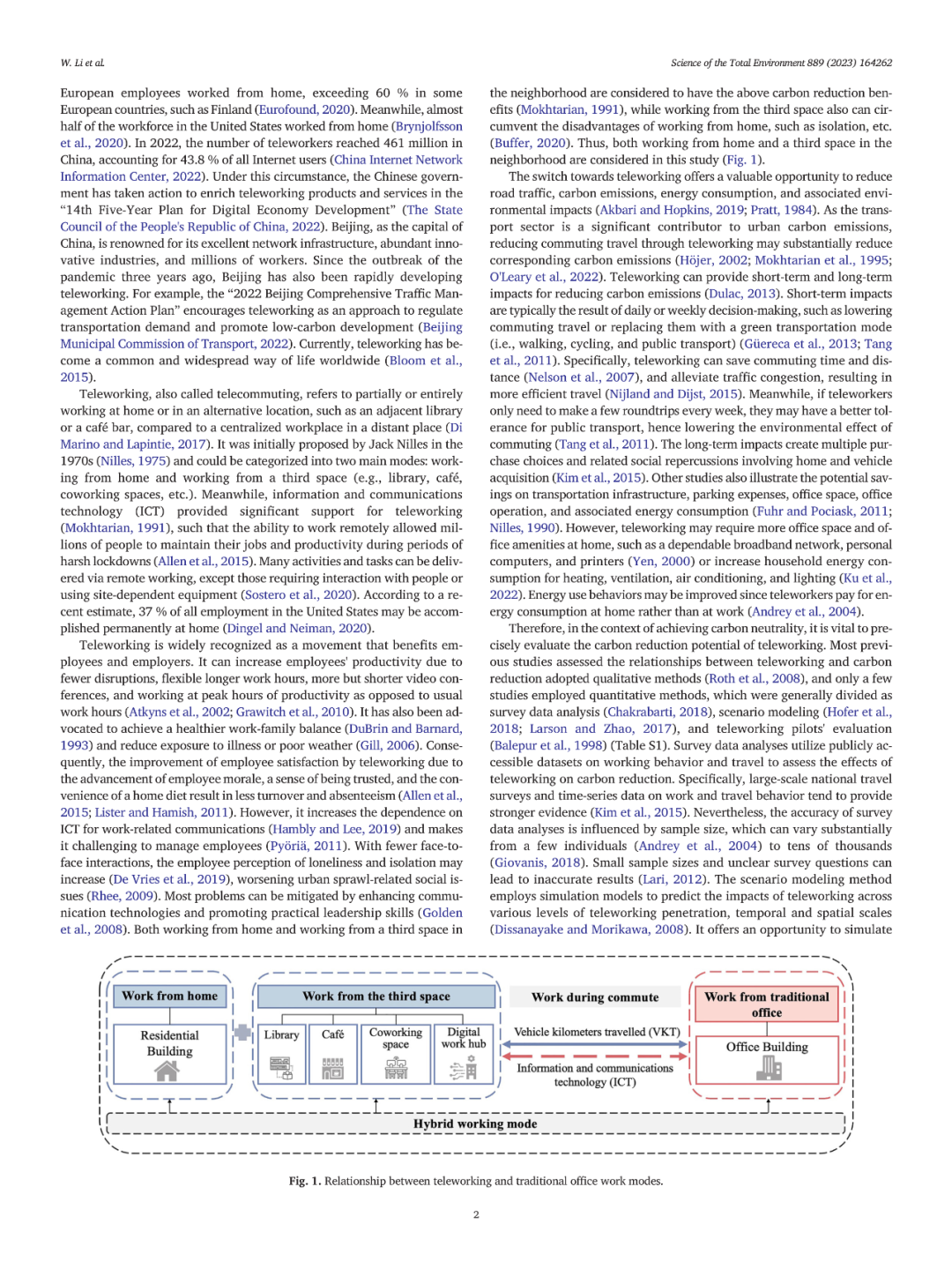
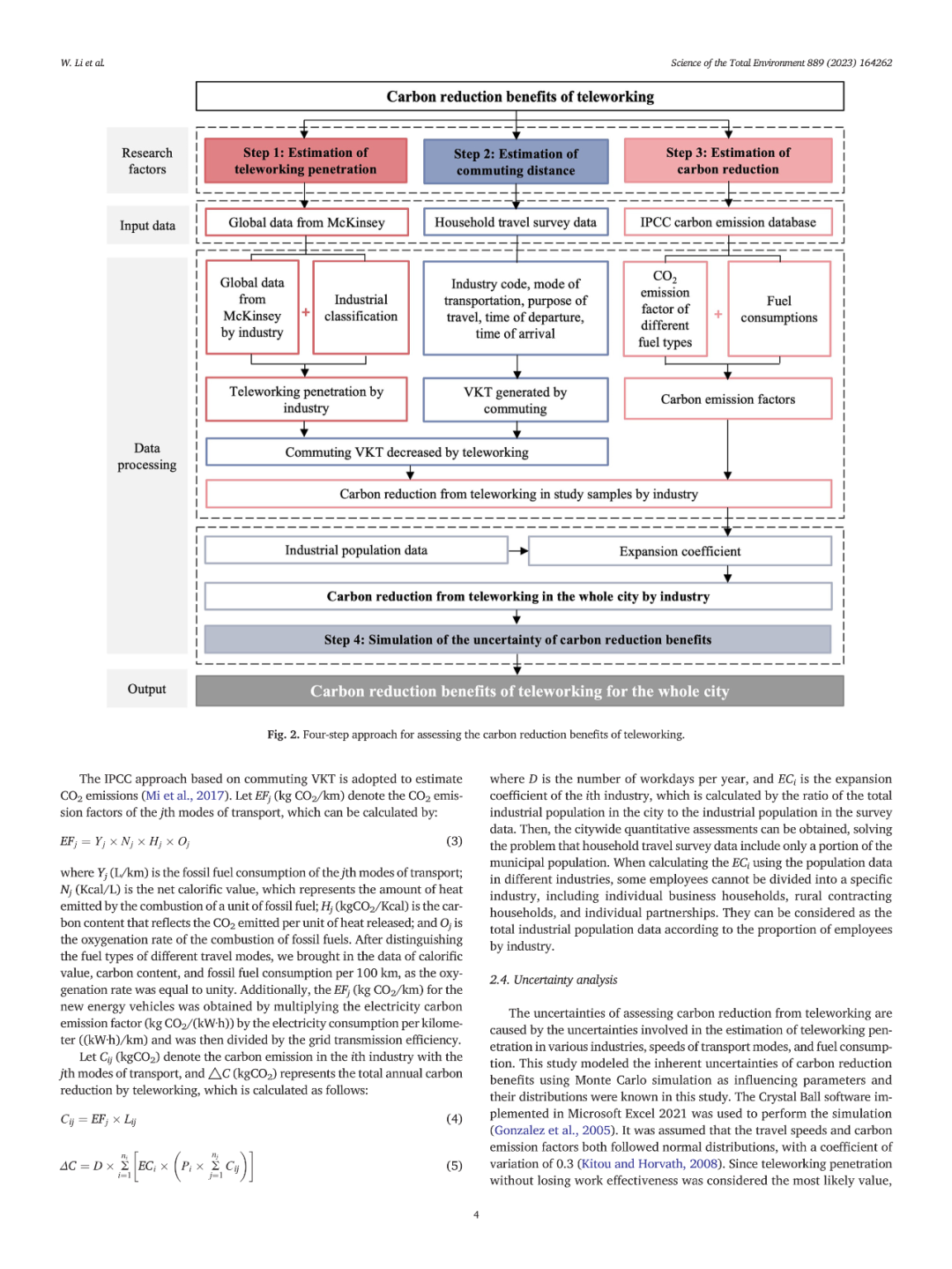
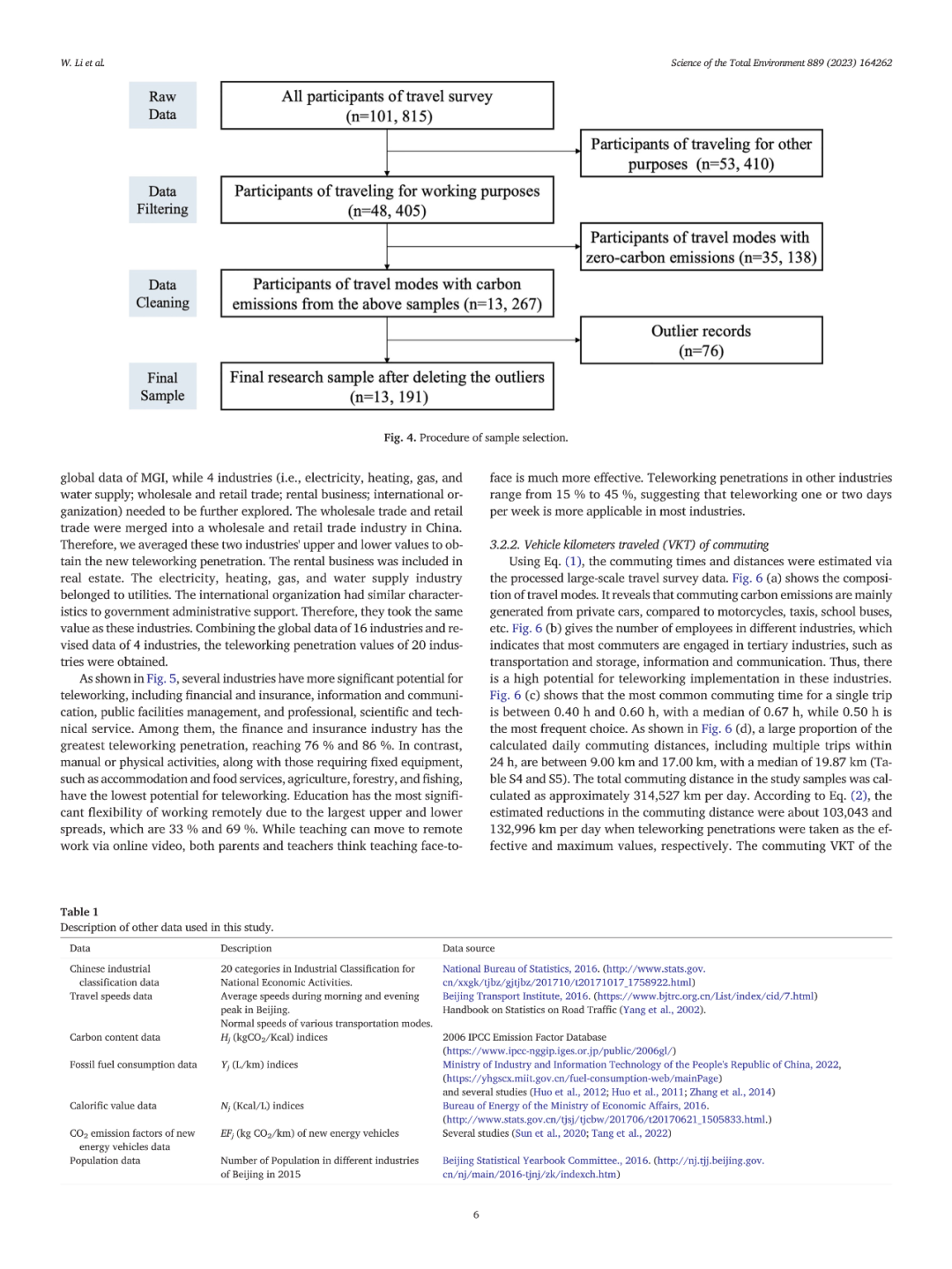
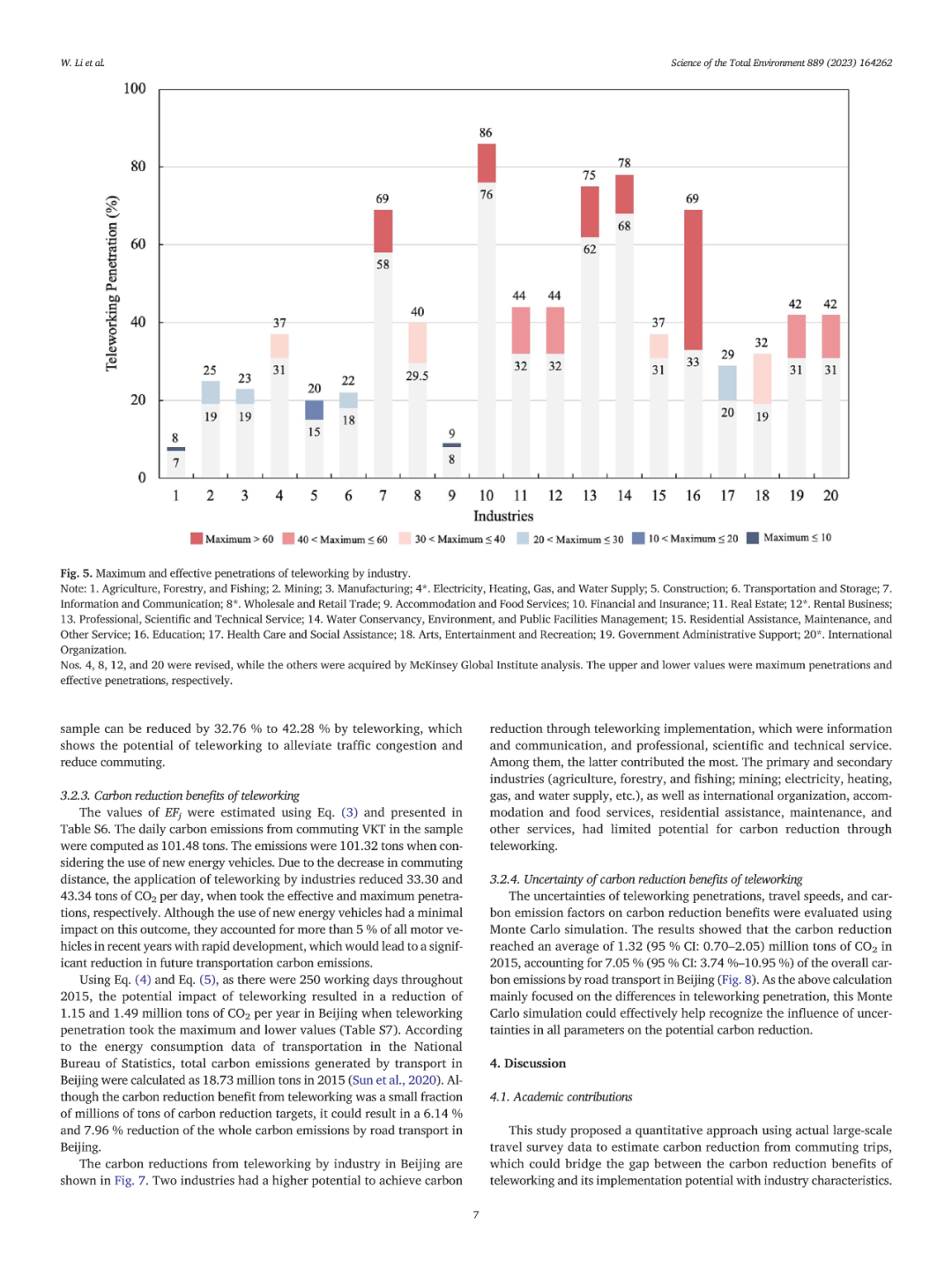
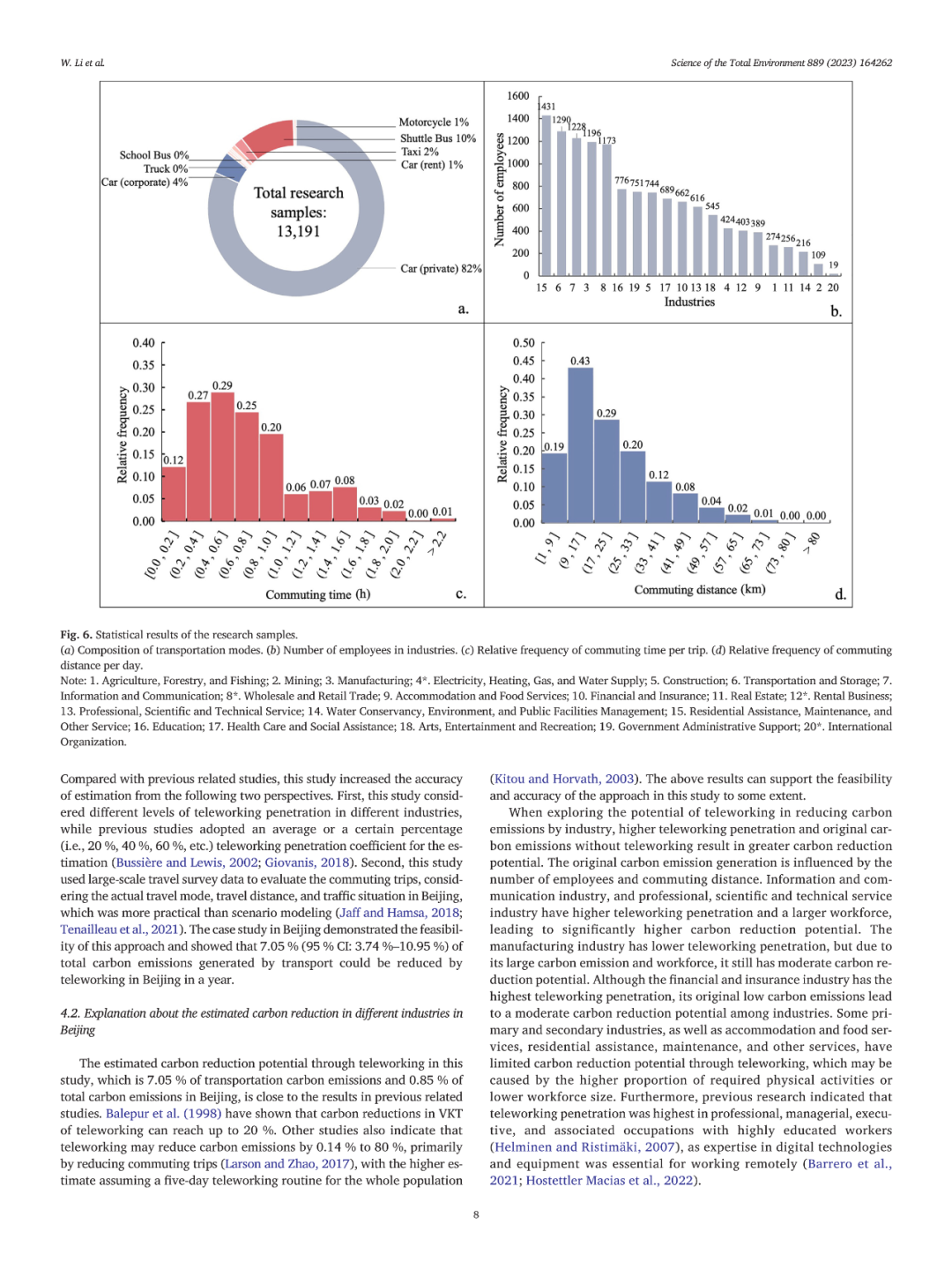
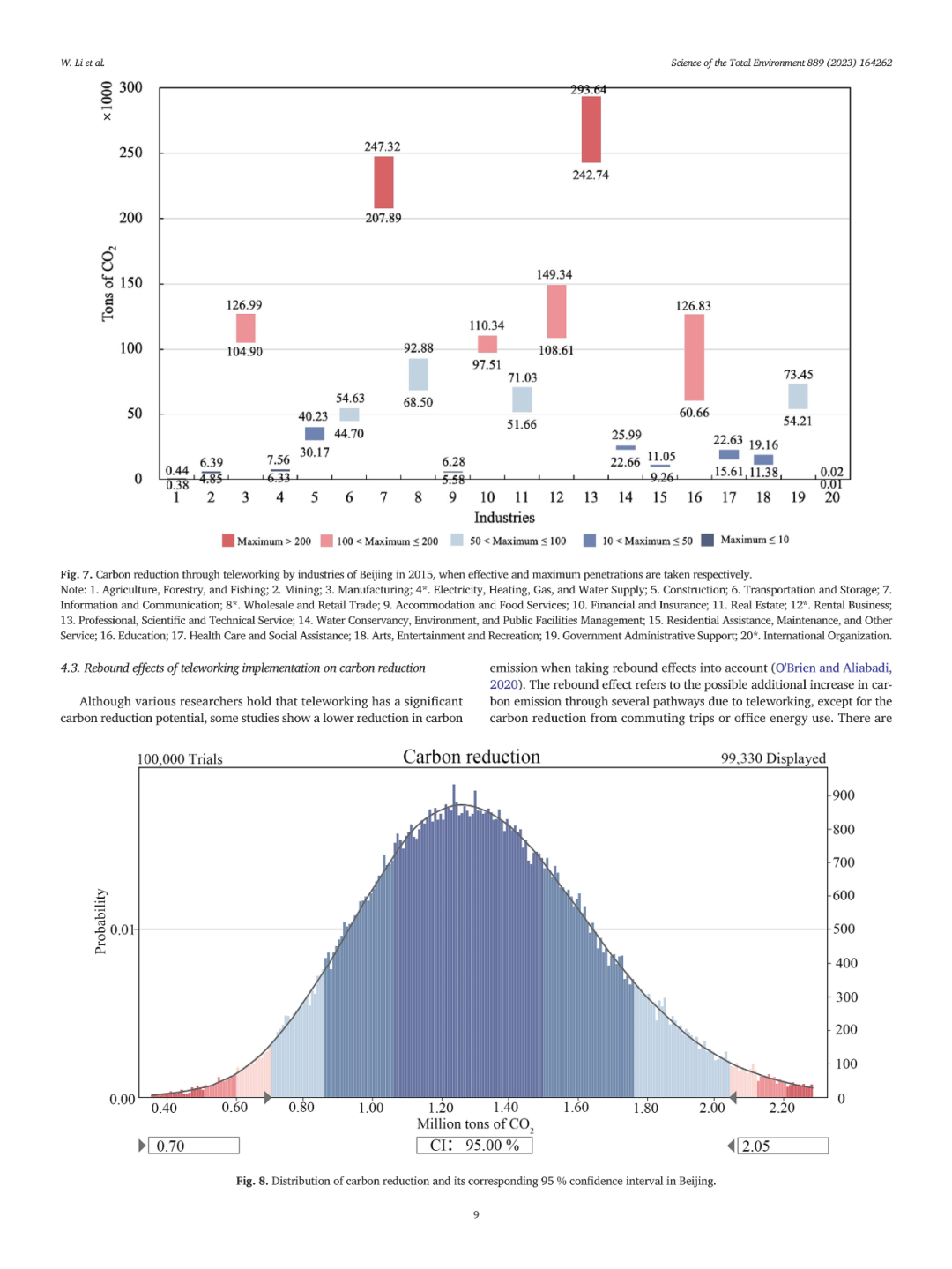
研究全文以及更多相关的研究工作详见BCL的【Teleworking】单元链接:
https://www.beijingcitylab.com/projects-1/59-teleworking/
(复制至浏览器搜索或点击文末“阅读原文”查看)
更多内容,请点击微信下方菜单即可查询。
请搜索微信号“Beijingcitylab”关注。
Email:BeijingCityLab@gmail.com
Emaillist: BCL@freelist.org
新浪微博:北京城市实验室BCL
微信号:beijingcitylab
网址: http://www.beijingcitylab.com
责任编辑:李文竹、张业成
原文始发于微信公众号(北京城市实验室BCL):论文推荐 | 远程办公的碳减排效益评估——以北京为例












 规划问道
规划问道







